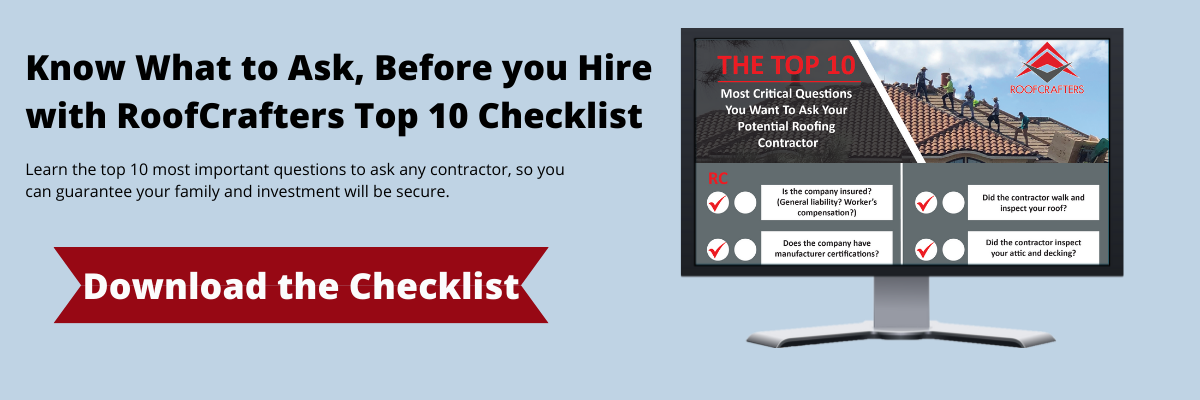How Do Hurricanes Affect Your Roof?
September , 2022 | 7 min. read
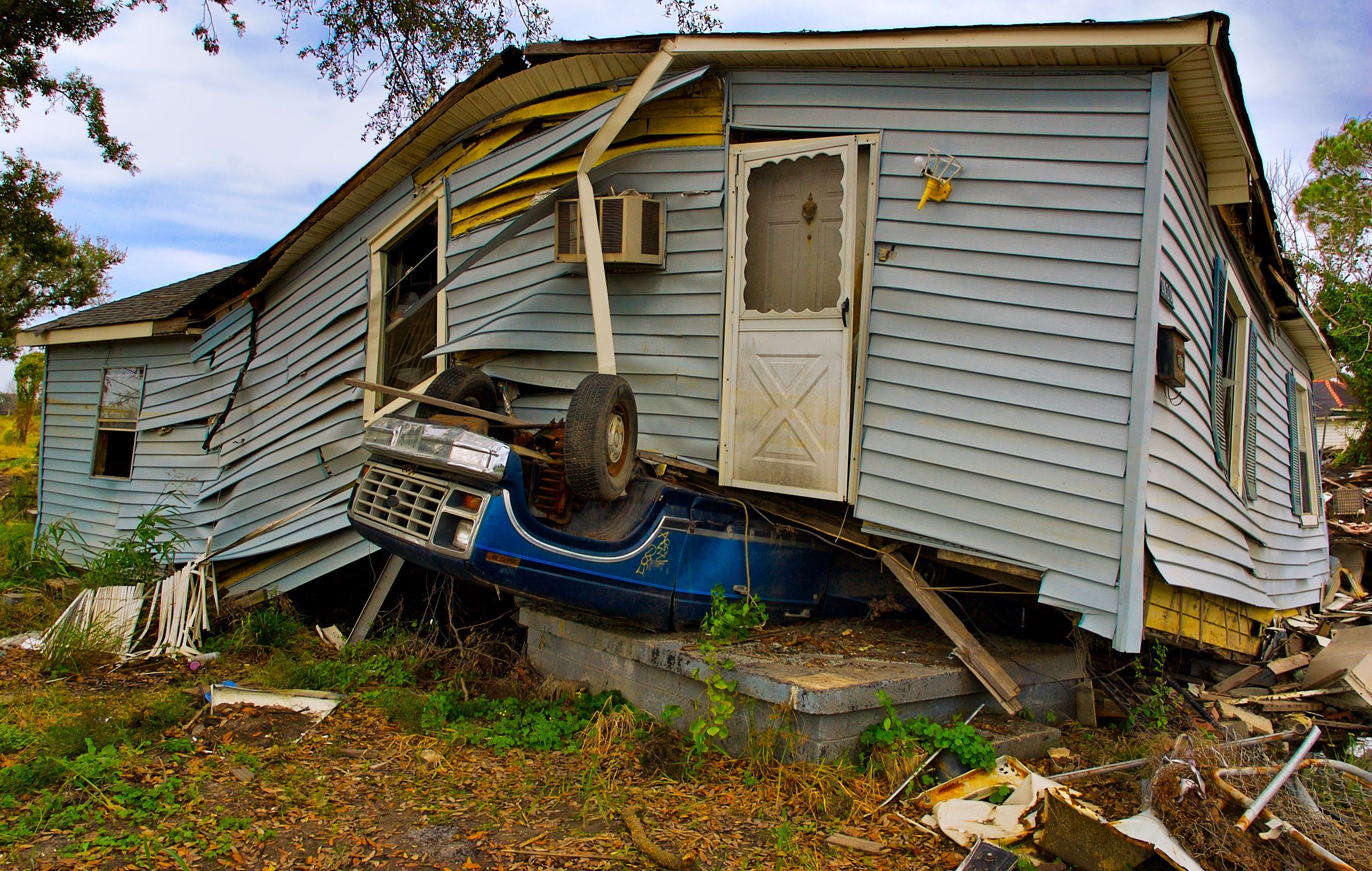
As a native of the Sunshine State, it’s become clear over the years that homeowners either do 1 of 2 things before a hurricane strikes:
1. Evacuate to a friend or family member’s upstateOr2. Host a hurricane party, hunker down with your neighbors and pray for the best
What’s your move? I'm more of a hurricane party type gal, however as a homeowner myself, I always make sure to take the proper precautions to make sure my roof and home can withstand the storm, especially if I'm in it.
Even if you’ve lived in a hurricane-prone region your entire life, you may be a pro, but that doesn’t make you exempt from safety precautions. Mother Nature spares no one, and RoofCrafters has seen her wrath time and time again throughout hurricane season, especially with Hurricane Ian that blew through Florida's west coast through the entirety of the state this past week.
We’ve seen the worst of the worst when it comes to hurricane roof damage, and although Mother Nature can’t spare you, the least we can do is provide you with some knowledge. It’s a good thing you’re here because, in this article, we’re gonna break down how hurricanes affect your roof, ranging from wind and heavy rain, all the way to hail and airborne debris. Let’s get started!
How Do Hurricanes Affect Your Roof?
Hurricanes affect your roof in many different ways. Some of the factors that could ultimately lead to damage include:
- Wind
- Heavy Rain
- Hail
- Airborne debris
Wind
When it comes to hurricanes, our main concern as homeowners is wind damage. More than half of all hurricanes cause wind damage, so be sure to take any pre-season precautionary measures. Any wind exceeding 50 miles per hour is classified as damaging wind. Such significant wind can cause shingles to fly off the roof deck, and missing shingles can lead to leaks and other interior damage. The type of roofing material on your home will impact the wind resistance your roof can withstand.
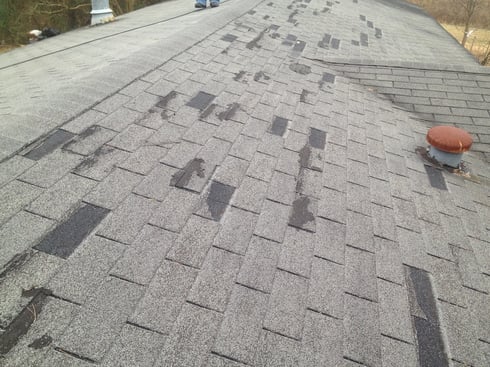
You may not easily spot other wind damage, especially if the adhesive seal that provides a water-shedding surface is broken. Calling a professional roofing contractor to help you detect other wing damage once the hurricane buzz settles down will give you an idea of your roof condition. When checking your roof on your own, always follow the proper safety precautions.
If you live in a region prone to hurricanes, comparing different manufacturers' wind coverage when installing your roof can help you select your shingle selection on a new roof. If the winds that caused the shingle damage were above the manufacturer’s wind coverage, you’ll need to file an insurance claim. Otherwise, contact the shingle manufacturer to file a claim. Although roofing manufacturers cover severe winds in their warranty, the estimated wind speed a roof can endure is based on a newly installed and well-maintained roof.
The tell-tale signs of wind damage include:
- Missing shingles. Cracked or peeling shingles are at major risk of being lost once wind speeds exceed 60 miles per hour.
- Visible Granule Loss. This indicates where the shingle seal was broken. Granules rub off as shingles flap in the wind and come into contact with other surfaces.
- Visible Water Infiltration. Most visible leaks that penetrate through to the ceiling of the house are the direct result of wind damage.
Heavy Rain
Heavy rains associated with hurricanes can be detrimental to your roof. Although your roof is designed to withstand and protect you and your family against the elements, sometimes even the most perfectly constructed roofs are no match for Mother Nature. Missing shingles or tiles swept up in the strong hurricane winds allows water to seep deep into the structure of your roof, which will be the culprit of pesky leaks later on.
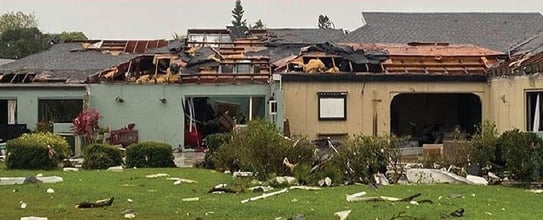
Even if your roof sustains something small such as cracked or lightly damaged shingles, sadly you’re still likely to suffer from water damage. It’s incredibly important that you have a pre-hurricane season roof inspection to make sure your roof is in good working condition. If it’s not, the effects could be dangerous for yourself and your family.
Hail
Hail? In a hurricane? Yeah, you read that correctly. Although it may seem like hail during a hot summer hurricane is rare, it’s more common than you’d think. Hail is a form of solid precipitation that occurs in strong storm clouds pushed up into the atmosphere at temperatures of 32°F or below, the same range at which snow is possible. It consists of balls or irregular lumps of ice, each of which is called a hailstone.
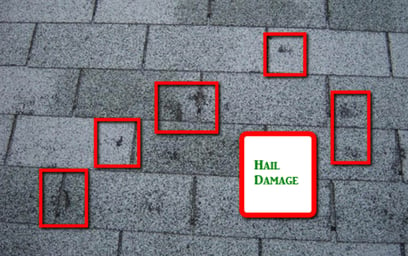
While it is difficult to assess the full extent of damage from hail to your roof from the ground, some signs can help determine if there could be more damage. If you notice any of the following signs post-hurricane, it’s time to follow up with a roof inspection. It is essential to find an affordable roofing service before minor problems continue to worsen to the point where roof replacement becomes necessary.
The two most common ways hail might damage your roof are:
- Granule loss: An easy way to determine if your shingles have lost granules is by taking a look at your gutters and downspouts. If you find any granules after a hailstorm, chances are the storm has taken a toll on your shingles.
- Shingle cracks: The impact of dense hailstones or strong winds can crack the shingles apart from other damage to your roof. While not all cracks might pose an immediate risk to the overall structure, they can still leave your roof with bare spots that might lead to roof leaks down the line. Cracked shingles also cannot protect your roof from external elements.
Airborne Debris
After a hurricane, you may notice loose debris around your home such as yard waste, outdoor furniture, and so on. This could indicate that something struck your roof during high winds. As hurricanes build and get stronger, tree branches or other fallen debris can land on your roof. Clear debris away as soon as it’s safe to do so to minimize risk and look for characteristics of broken shingle patterns to assess impacts.
Small items won’t cause an issue. Other items such as trampolines, outdoor furniture, and decor may cause serious damage if not properly stored away. In this case, use your best judgment. You may need to have a professional roofing contractor inspect your roof to see the amount of damage. You can file an insurance claim if you have damage from debris on your roof.
Can My Roof Weather The Storm?
If you take the proper safety precautions before hurricane season or the storm itself, your roof will be able to withstand the storm. The one thing that I cannot stress enough is having a preseason inspection conducted as soon as possible. Being proactive and prepared is what will save your roof, and ultimately your home and other belongings.
Be sure to schedule your inspection or any necessary repairs promptly. Finding a qualified contractor in your area may seem tricky, but with our “Top 10 Most Critical Questions You want to Ask Your Potential Roofing Contractor”, finding a roofer you feel most comfortable to complete the job will be a breeze.
In the meantime, feel free to browse through the extensive resources located in our learning center. I recommend reading “Does Insurance Cover Storm Damage to a Roof?” to be better educated about what comes out of your pocket if your roof ultimately does end up enduring damage from the storm.
My name is Cassie, and I’m the Content Manager here at RoofCrafters. I was born and raised in Chicago, Illinois, and made my way out to Florida post-college graduation. I’m incredibly passionate about writing and creating valuable content that helps others with the collaboration of my marketing team. When I’m not working, I enjoy shopping (a little too much), spending time at the beach, and reading!


